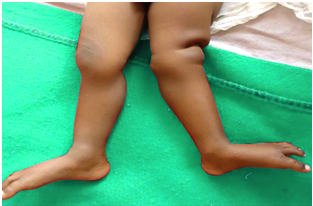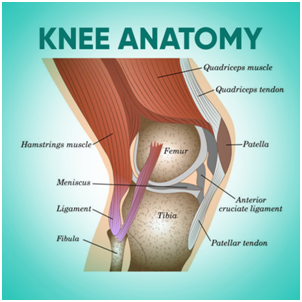Congenital dislocation knee/patella Treatment
Looking out for a pediatric orthopedic surgeon for treatment of congenital dislocation of the patella?
Congenital dislocation knee is usually detected in newborn babies or children as they grow older. Corrective surgery is the preferred treatment approach for normal movement and preventing it from recurring.
Leading pediatric orthopedic surgeon in Gurgaon, Dr. Ratnav Ratan of Young Bones Clinic,offers patella Treatment.
If in a new born baby, the kneecap or the patella is out of its normal position at the knee joint then the condition is referred to as congenital dislocation of the patella. It is a relatively rare condition and is detected which can be detected at birth or later on. A child with this condition may face difficulty in walking and abnormal walking patterns.

Anatomy of the kneecap or the patella
The kneecap lies within the patellofemoral groove of the thighbone and in front of the knee joint. It is attached to the quadriceps tendon on the top side and to the patellar ligament on the underside.
The kneecap is the largest sesamoid bone in the body, i.e. it is round shaped body mass located within a tendon and attached to a joint surface. The main purpose of a kneecap is to reduce friction, alter the direction of them muscle pull and even change the pressure levels. Thus, a kneecap helps in leg extension and provides protection to the knee joint on the frontal or the above side

Symptoms of Congenital dislocation knee
- Delay in beginning to walk
- Coexist with knock knees, club foot, vertical talus and other hip & foot deformities.
- Difficulty in walking
- Abnormal walking pattern
- Bent knee associated with lower leg or foot deformity
Diagnosis of Congenital dislocation knee
The treating orthopedic surgeon will conduct a physical examination of the child. The child with this defect may not be able to straighten the leg. Also, if required, x-rays, sonography and MRI scan will help in ascertaining the extent of deformity and future course of treatment.
The diagnosis and detection can take place when the child is just a week or so old or till he or she reaches 15 years in age.
Congenital dislocation knee can be associated certain conditions such asarthrogryposis and diastrophic dysplasia along with the following syndromes –
- Down syndrome
- Nail-patella syndrome
- Larsen syndrome
- Rubinstein-Taybi syndrome
- Ellis-van Creveld syndrome
Treatment of congenital dislocation of the patella
Surgery is recommended to treat this type of dislocation of the kneecap. The surgeon will realign the all the organs or parts related with the knee to ensure a stable kneecap.
This type of surgery is performed as per the condition of the patient. It may involve lengthening of the muscles and tissues located on the outer thigh and on its top too. It can involve shortening as well as straightening of the thigh bone. Corrective action to resolve the knock knees condition and also ensure the peroneal nerve is well in place and protected when the knee is straighten and so on. All in all, the treating orthopedist will perform a surgery to make resolve the loose knee cap condition and ensure the knee will perform in a normal comprehensive manner while retaining the knee strength.
Complications related to the surgical treatment of congenital dislocation of the knee
The surgical treatment of congenital dislocation of the knee has its share of risks and complications such as:
- Infection at the surgical site
- Loss of blood
- Loss of movement in joints
- Blood clots
- Recurrence of deformity
- Issues in implants used to keep the joint in place
- Neurovascular injury




